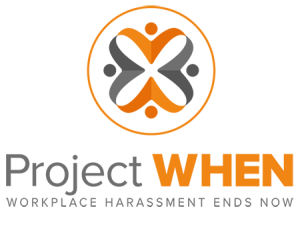Innovations in Office Design: The Critical Influence Approach to Effective Work Environments™
ISBN: 978-0-471-73041-5
This definitive book on leadership in driving change through workplace transformation offers vital lessons for architects, designers, facility managers, corporate real estate human resource professionals, and business leaders. Written by an expert on workplace change management, the text reveals findings from more than ten years of research of over 140 organizations, in twenty-four diverse industries, on how the workplace environment can be optimized to improve workforce productivity, thus better supporting the achievement of organizational goals.
Based on her research on the fifteen Critical Influences on behavior in the workplace, Stegmeier’s practical approach to helping clients manage change is defined as the “practice of strategically guiding organizational transformation while maintaining human psychological stability and minimizing business process disruption.”
Innovations in Office Design: The Critical Influence Approach to Effective Work Environments:
-Shatters the myth that the workplace design must bear 100 percent of the burden of transforming the way people work
-Reveals how workplace professionals can be involved earlier in the enterprise’s decision making process, and serve as strategic business partners to the organization
-Includes lessons learned from numerous thought leaders in the design of commercial interiors
-Ranked #1 Workplace Strategy Book by Amazon readers
-Recipient of the International Facility Management Association’s (IFMA) Award of Excellence, Distinguished Author for a Book
Where to get it…

[expand title=”Amazon Reader Reviews”]The book has been rated the #1 Workplace Strategy Book on Amazon. Here’s what one reader, Jonah Goalstein, had to say:
5 Stars
This book is an essential read for any professionals in the corporate real estate/facilities/human resources realm, and quite frankly should be required reading material for anyone sitting in the C-suite. Innovations in Office Design is expertly-written and gives readers a detailed look into the different factors that affect productivity and collaboration of the workforce. The title may be a bit misleading; the book is more about how to assess an organization through the 15 critical lenses which have an impact on the workplace, as opposed to merely the physical office. As such, readers will really learn a different way of looking at their organization and will realize that the physical office environment is just one of multiple factors that have a say in the health of an organization.
Diane Stegmeier really knows her stuff. The book offers examples of best practices from successful organizations around the globe, and with how many examples she offers, I’d find it hard to believe that an executive from any organization could read through the book and not find one example of how to improve their own organization’s effectiveness.
You’d be a fool not to read this if you fit into any of the following categories:
-Corporate Real Estate professionals
-HR professionals
-Facilities professionals
-Corporate executives (CEOs and the such)
-You’re considering moving into a new office/building
-You’re attempting to implement alternative workplace strategies (telework/flexwork/shared space/open office environment/hoteling/reducing private offices and cubicles)
-You’d like your organization to be more collaborative/innovative
-Your company is hemorrhaging talent
-Your organization or office seems like something is missing
They should have named this book “Effective Workplaces for Dummies” because this book is the seminal piece for anyone looking to get the most out of their office and workforce.[/expand]
[expand title=”On the book…”]“Diane Stegmeier’s landmark findings on workplace behavior in the corporate setting will prove vital in determining workplace strategy over the next ten years.”
– Dr. Prentice Knight, former CEO of CoreNet Global
“Stegmeier Consulting Group takes a truly comprehensive approach to understanding the business barriers to the successful implementation of physical space design–whether the workplace strategy is focused on cost reduction, supports the blended workforce resulting from a recent merger, centers on attracting and retaining talent, or aims at accommodating the multigenerational workforce. The Critical Influence methodology identifies areas of resistance to change and addresses them, enabling the architectural and design firm to do what they do best–create the appropriate workplace solution.”
– Greg Bendis, global real estate strategist
“One of the most difficult aspects of facility management is the inability to link environmental improvements with measurable productivity results. Stegmeier’s observations in this area are based on hard facts and real research, not just abstract theories. Her work is an essential tool for any professional looking to justify facility improvements that can actually support and advance the mission of the organization.”
– Heidi Schwartz, Editor-in-Chief of Today’s Facility Manager Magazine[/expand]
[expand title=”Excerpts from Chapter 4: Under the Influence”]
On the topic of the multigenerational workforce…
Figuring out how to create an appropriate physical work environment to accommodate the four generations in today’s workforce is a growing concern to many workplace professionals. Add to that the desire to support an increase in collaboration to produce greater innovative outputs and you’ve just identified a baffling problem with no simple solution.
In many organizations today, members of the two youngest groups in the workforce, the millennial generation (born 1975 and after) and Generation Xers (born between 1961 and 1974) are not in significant positions of power and so have to play by the rules created by the veteran generation (born before 1946) and being enforced by the baby boomers (born between 1946 and 1964). Many members of the millennial generation and Gen Xers may not yet be in supervisory or management positions, but they will be soon. As they gain work experiences to help them advance in their careers, many business leaders wonder whether these workers’ social skills and approach to human interaction in the workplace will be adequate to drive organizational success.
To illustrate this issue, here’s an example related to one Critical Influence on collaborative behavior–communications. A 50-year-old individual working in a particular office building may prefer to contact a colleague to compare calendars and schedule a meeting electronically to be held in his or her private office, attaching an agenda to efficiently discuss a topic of medium-range importance. Elsewhere in that same office is a 20-something member of the workforce, who makes a critical career decision on the spot and submits his or her resignation with no advanced notice via a text message to the manager, who happens to be sitting six feet away. While the more mature generations may employ technology to orchestrate human interactions, I often hear clients express concerns that younger workers may be relying too heavily on technology to compensate for their less-developed social skills. For Stegmeier Consulting Group’s clients, strengthening internal communications is consistently an area targeted for improvement. Workshops such as our Business Communications Boot Camp (BC2) have evolved over time and now place significant emphasis on the diversity of communication styles in multigenerational work environments.
In general, the pendulum is swinging away from work environments where managers strive to earn the right to physical spaces that symbolize prestigious titles and the associated authority. Both highly defined dress codes and protocols for addressing authority figures are today being challenged and, as a result, are becoming less rigid. The pendulum is moving toward environments where staff members expect to be engaged every day in work that is important, to be given opportunities to make an impact today, and to be offered growth potential in the future. These organizations encourage managing, coaching, and development among staff levels. A growing emphasis is on serving the people at lower levels of the organization–the next generation of leaders.
Shifting generational attitudes can be manifested in the physical space. A workplace strategy that includes flexible scheduling and options such as working from satellite offices or telecommuting can contribute to meeting the widespread desire for an improved quality of life for the entire workforce. The notion of providing a dedicated workspace for each employee is costly in terms of real estate, furniture, and work tools, and long outdated. In Chapter 5, we’ll look at some very impressive quantitative results realized by enterprises that have adopted new approaches to allocating their physical office space. In particular, Cisco has documented some formidable results that will get the attention of the most skeptical reader.
On the topic of flexibility to enable work-life balance…
Flexibility is an essential component in enabling a work/life balance. What characterizes flexibility in the organization? To workplace professionals, the concept may be manifested in tangible elements such as mobile furniture and work tools, portable electronic devices, demountable walls, and raised flooring. To other functional groups, flexibility is underscored in its company policies. To employees, it may be manifested in leaders “walking the talk,” helping them to use the tangible tools and the policies. In other words, it’s not just having the rules in place; it’s the organizational attitude toward their use, whether the policies, work tools, or choice of physical spaces. Many members of the workforce feel their employers have put the mechanisms in place for flexibility, yet maintain a culture that stifles the advancement of those who actually use the flexible arrangements offered. It is in the integration of a flexible physical work environment, tools, policies, and an appropriate culture that will raise the chances of success of such an important approach to better supporting the workforce.
Chapter Summary…
The accelerated pace of change in the business environment presents new challenges to workplace professionals. An organization may be growing organically because of sustained, positive customer response to a new business direction, or be increasing in size due to a merger or acquisition. Employee expectations linked to a culture where physical space is treated as a currency to reward managers with private offices need to be balanced with new organizational expectations where everyone interacts collaboratively–perhaps in an open office environment, despite the fact that there will always be internal competition for limited resources. The physical work environment needs to attract future business leaders today, without causing a mass exodus of experienced, high-level managers in the process.
The organization dedicated to doing what is necessary to support a new strategic direction must make tough decisions when creating the appropriate work environment–regardless of intense overt resistance and silent sabotage working covertly to undermine all good intentions. The welcome news is that workplace professionals don’t have to go it alone, if their senior leaders understand the Critical Influence System and the power physical space has on behavior. The workplace should never bear 100 percent of the burden of transforming the way people work.
In Chapter 5, I’ll introduce you to organizations in the financial, high- technology, pharmaceutical, manufacturing, telecommunications, and professional services, as well as the U.S. federal government. We’ll take a look at a number of winners of Fortune Magazine’s Best Companies to Work for in America and the Great Places to Work Institute’s Best Small and Best Medium Companies to Work for in America. You’ll read about diverse approaches taken by the architectural and design communities in serving their clients. You’ll find that though challenges and approaches may differ, there’s a commonality in the emphasis placed on building flexibility into the workplace solution, to enable the physical space to morph in response to future changes in business direction.
Copyright © 2008, 2019 Diane Stegmeier. All rights reserved. This material is protected by copyright law and may not be reproduced without prior written permission of the author.[/expand]



